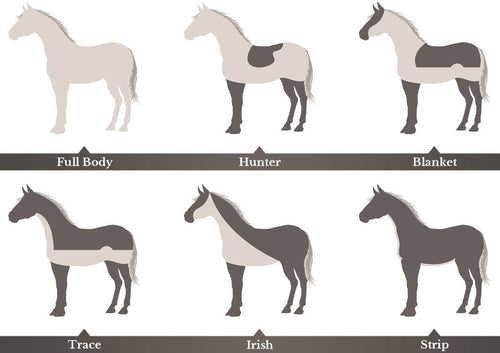As winter approaches, horse owners are faced with various challenges, including maintaining their horse’s coat. While wild horses adapt naturally to the changing seasons with their bodies' automatic coat adjustments, domesticated horses, especially those in active work, often require a little human intervention for optimal health and comfort. One common practice is winter clipping. Let's explore the benefits of this grooming technique.

1. Temperature Regulation
The most compelling benefit of clipping horses in the winter is the management of body temperature. Active horses sweat, and their thick winter coats can cause them to overheat, and later, take too long to dry off. Clipping helps to prevent this by removing excess hair and allowing for quicker drying and cooling. This is particularly vital after exercise, preventing the horse from catching a chill as their sweat evaporates in the cold air.

2. Health and Hygiene
A thick coat can trap moisture, dirt, and mud, which are inevitable in the winter months. This environment can breed bacteria and fungi, leading to skin conditions such as rain scald or mud fever. Clipped horses are easier to keep clean, reducing the risk of these issues. Moreover, it's easier to spot any health problems like cuts, lumps, or skin diseases on a clipped horse than one with a full winter coat.
3. Enhanced Performance and Comfort
For the performance horse, a heavy coat can be a barrier to effective training. A clipped horse will be more comfortable during work, allowing them to perform to the best of their ability. Without the encumbrance of a heavy, sweaty coat, the horse can move freely, and the rider can also work more easily with the horse's body.

4. Aesthetic and Practical Grooming
Let's face it; a clipped horse often looks more polished and ready for action. If you're attending winter shows or competitions, a neatly clipped horse presents a tidy and professional image. From a practical standpoint, grooming becomes a much less arduous task when the thick mud-caked layers are out of the equation.

5. Time Efficiency
Drying a horse off after work can be a lengthy process in the winter. Clipping significantly reduces this time, allowing the horse to cool down faster and thus shortening the overall post-exercise care routine. This is a considerable advantage for owners or riders who may be pressed for time.
6. Blanketing Customisation
Clipping doesn't mean the horse will be left to fend off the cold without its natural coat. On the contrary, it allows for a more controlled and customized approach to blanketing. Blankets can be layered and adjusted according to the weather, the horse's exercise schedule, and whether they are stabled or pastured.
Implementing Clipping with Care
While the benefits are clear, clipping must be done with consideration. Not all horses require the same amount of clipping, and the type of clip should be chosen based on the individual horse’s needs and lifestyle. After clipping, the horse will need to be blanketed appropriately to compensate for the loss of their natural insulation. Regular grooming is still necessary to stimulate the skin and check for any issues.

